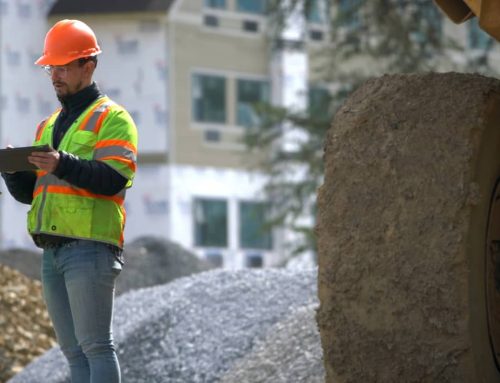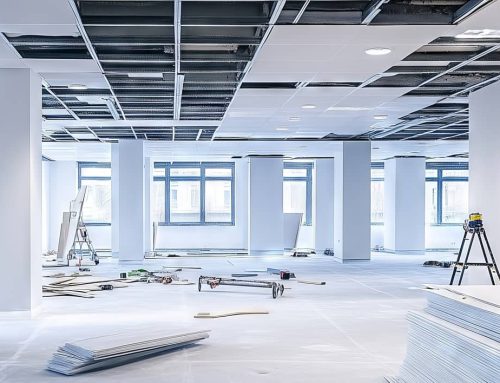Green building is a revolutionary approach to construction that prioritizes sustainability and environmental responsibility. It goes beyond simply using eco-friendly materials and incorporates design strategies that minimize the negative impact on the planet. Green building practices aim to reduce energy consumption, conserve water, promote healthy indoor air quality, and minimize waste. This approach is important because traditional construction methods contribute significantly to carbon emissions, resource depletion, and pollution. By embracing green building, we can create structures that not only enhance the well-being of occupants but also contribute to a healthier and more sustainable future for our planet.
Sustainable materials and technologies in green building
Sustainable materials and technologies play a pivotal role in the future of green building. From the use of advanced materials like recycled steel and engineered wood, to the integration of innovative technologies, like solar panels and smart energy management systems that optimize energy consumption, the future of green building is bright. Additionally, we are witnessing a shift towards biophilic design, which incorporates natural elements to improve occupant well-being and connection to the natural environment. By embracing these advancements, green buildings not only contribute to a healthier planet but also provide occupants with a comfortable and cost-effective living or working environment. Here are a few areas to consider sustainable materials and technologies:
Energy efficiency and renewable energy in green building
Energy efficiency and renewable energy are two key components of green building that are shaping the future of sustainable construction. By incorporating energy-efficient systems and technologies, such as solar panels and geothermal heating, green buildings are able to significantly reduce their energy consumption and carbon footprint. The integration of energy efficiency and renewable energy in green building not only benefits the environment but also leads to long-term cost savings for building owners and occupants.
Water conservation and management in green building
Water conservation and management are key components of sustainable construction practices in green building. By implementing innovative techniques such as rainwater harvesting, greywater recycling, the use of low-flow fixtures, and efficient irrigation systems, builders can significantly reduce the demand for freshwater resources. The integration of these strategies not only helps to preserve our precious water resources but can reduce operational costs for property owners.
Reduction and recycling of waste in green building
By implementing effective waste management strategies, such as material reuse and recycling, we can significantly minimize the environmental impact in both the construction process and ongoing operations. Not only does this approach conserve natural resources and reduce landfill waste, but it also promotes a circular economy by repurposing materials for future use. Through innovative practices like pre-construction planning, on-site sorting, and collaboration with local recycling facilities, we can achieve higher levels of sustainability and contribute to a greener future for the construction industry.
Challenges and rewards to implementing green building practices
One major challenge is the higher upfront costs of green building materials and technologies. While these investments may seem daunting at first, they pay off in the long run through reduced energy consumption and operating costs. Another barrier is the lack of awareness and understanding among stakeholders about the benefits and importance of green building. Educating and raising awareness about the environmental and economic advantages of sustainable construction is key to overcoming this barrier. On the other hand, commercial property owners who take advantage of green building practices are eligible for a variety of tax incentives and credits including the 179D Energy-Efficient Commercial Building Tax Deduction. PACE programs are another way property owners can find help with up-front costs of eligible energy improvements.
Conclusion: the importance of embracing green building for a sustainable future
Embracing green building practices is crucial for a sustainable future in the construction industry. As the demand for energy-efficient and environmentally friendly buildings continues to grow, it is essential for construction professionals to prioritize sustainability. Green building not only reduces the negative environmental impacts of construction but also offers numerous benefits such as energy savings, improved indoor air quality, and reduced operating costs. By incorporating sustainable materials, energy-efficient designs, and renewable energy systems, we can create buildings that not only meet the needs of the present but also safeguard the well-being of future generations. Embracing green building practices is not just a trend; it is a responsibility that every construction professional must undertake to shape a more sustainable future.
Green building is a revolutionary approach to construction that prioritizes sustainability and environmental responsibility. It goes beyond simply using eco-friendly materials and incorporates design strategies that minimize the negative impact on the planet. Green building practices aim to reduce energy consumption, conserve water, promote healthy indoor air quality, and minimize waste. This approach is important because traditional construction methods contribute significantly to carbon emissions, resource depletion, and pollution. By embracing green building, we can create structures that not only enhance the well-being of occupants but also contribute to a healthier and more sustainable future for our planet.
Sustainable materials and technologies in green building
Sustainable materials and technologies play a pivotal role in the future of green building. From the use of advanced materials like recycled steel and engineered wood, to the integration of innovative technologies, like solar panels and smart energy management systems that optimize energy consumption, the future of green building is bright. Additionally, we are witnessing a shift towards biophilic design, which incorporates natural elements to improve occupant well-being and connection to the natural environment. By embracing these advancements, green buildings not only contribute to a healthier planet but also provide occupants with a comfortable and cost-effective living or working environment. Here are a few areas to consider sustainable materials and technologies:
Energy efficiency and renewable energy in green building
Energy efficiency and renewable energy are two key components of green building that are shaping the future of sustainable construction. By incorporating energy-efficient systems and technologies, such as solar panels and geothermal heating, green buildings are able to significantly reduce their energy consumption and carbon footprint. The integration of energy efficiency and renewable energy in green building not only benefits the environment but also leads to long-term cost savings for building owners and occupants.
Water conservation and management in green building
Water conservation and management are key components of sustainable construction practices in green building. By implementing innovative techniques such as rainwater harvesting, greywater recycling, the use of low-flow fixtures, and efficient irrigation systems, builders can significantly reduce the demand for freshwater resources. The integration of these strategies not only helps to preserve our precious water resources but can reduce operational costs for property owners.
Reduction and recycling of waste in green building
By implementing effective waste management strategies, such as material reuse and recycling, we can significantly minimize the environmental impact in both the construction process and ongoing operations. Not only does this approach conserve natural resources and reduce landfill waste, but it also promotes a circular economy by repurposing materials for future use. Through innovative practices like pre-construction planning, on-site sorting, and collaboration with local recycling facilities, we can achieve higher levels of sustainability and contribute to a greener future for the construction industry.
Challenges and rewards to implementing green building practices
One major challenge is the higher upfront costs of green building materials and technologies. While these investments may seem daunting at first, they pay off in the long run through reduced energy consumption and operating costs. Another barrier is the lack of awareness and understanding among stakeholders about the benefits and importance of green building. Educating and raising awareness about the environmental and economic advantages of sustainable construction is key to overcoming this barrier. On the other hand, commercial property owners who take advantage of green building practices are eligible for a variety of tax incentives and credits including the 179D Energy-Efficient Commercial Building Tax Deduction. PACE programs are another way property owners can find help with up-front costs of eligible energy improvements.
Conclusion: the importance of embracing green building for a sustainable future
Embracing green building practices is crucial for a sustainable future in the construction industry. As the demand for energy-efficient and environmentally friendly buildings continues to grow, it is essential for construction professionals to prioritize sustainability. Green building not only reduces the negative environmental impacts of construction but also offers numerous benefits such as energy savings, improved indoor air quality, and reduced operating costs. By incorporating sustainable materials, energy-efficient designs, and renewable energy systems, we can create buildings that not only meet the needs of the present but also safeguard the well-being of future generations. Embracing green building practices is not just a trend; it is a responsibility that every construction professional must undertake to shape a more sustainable future.




